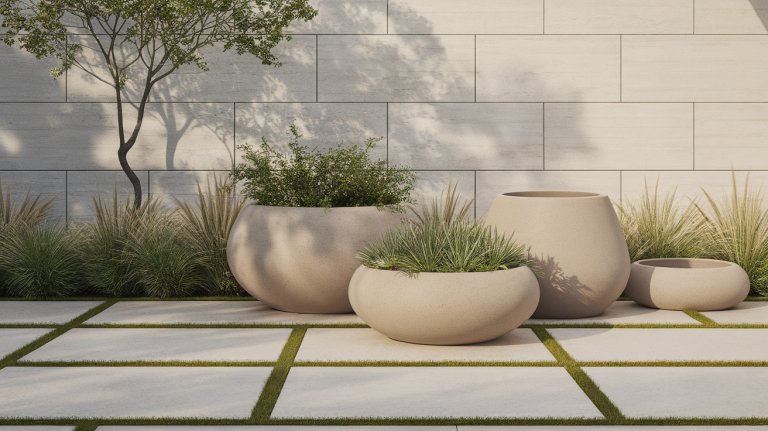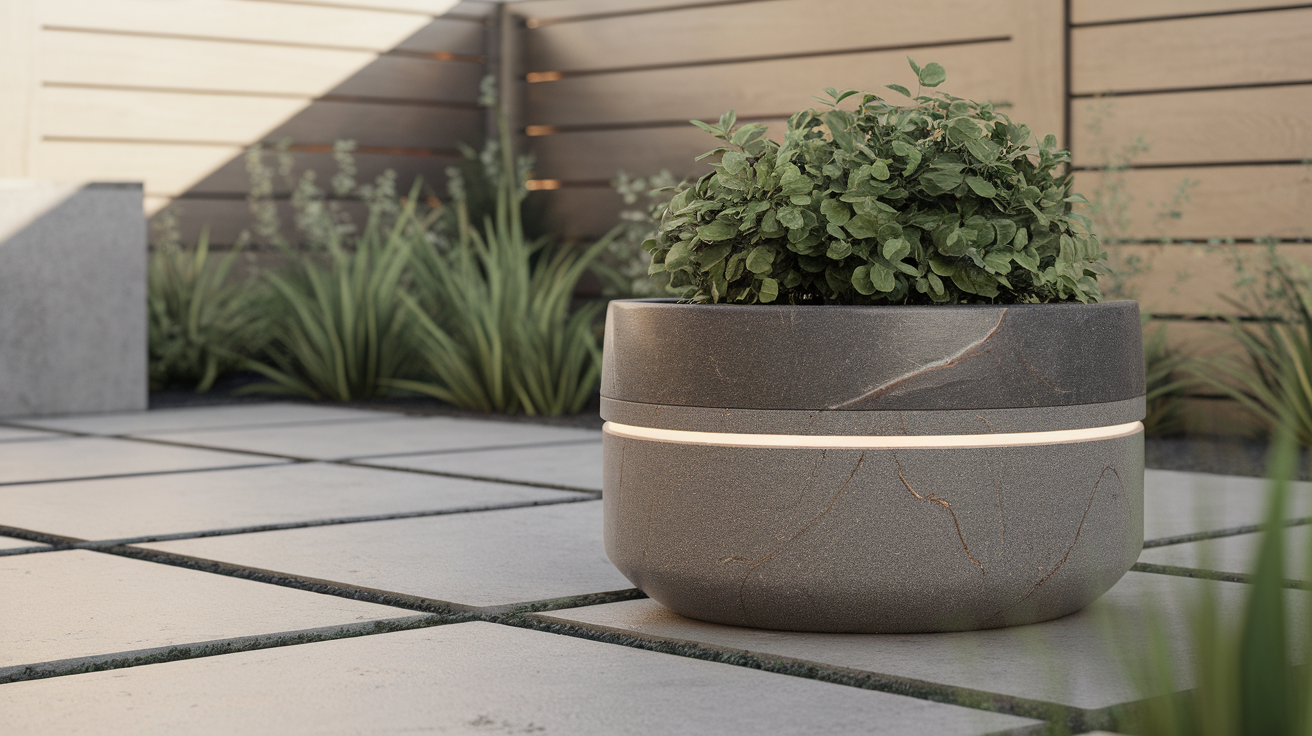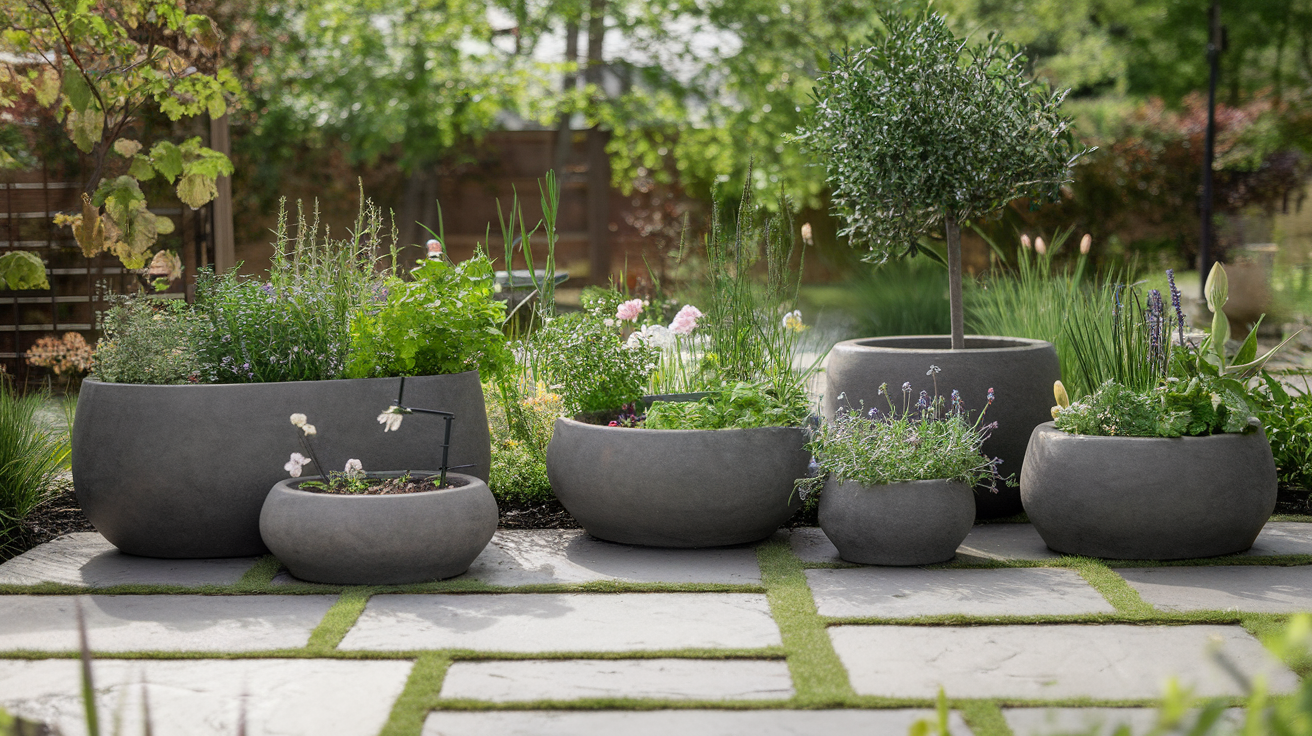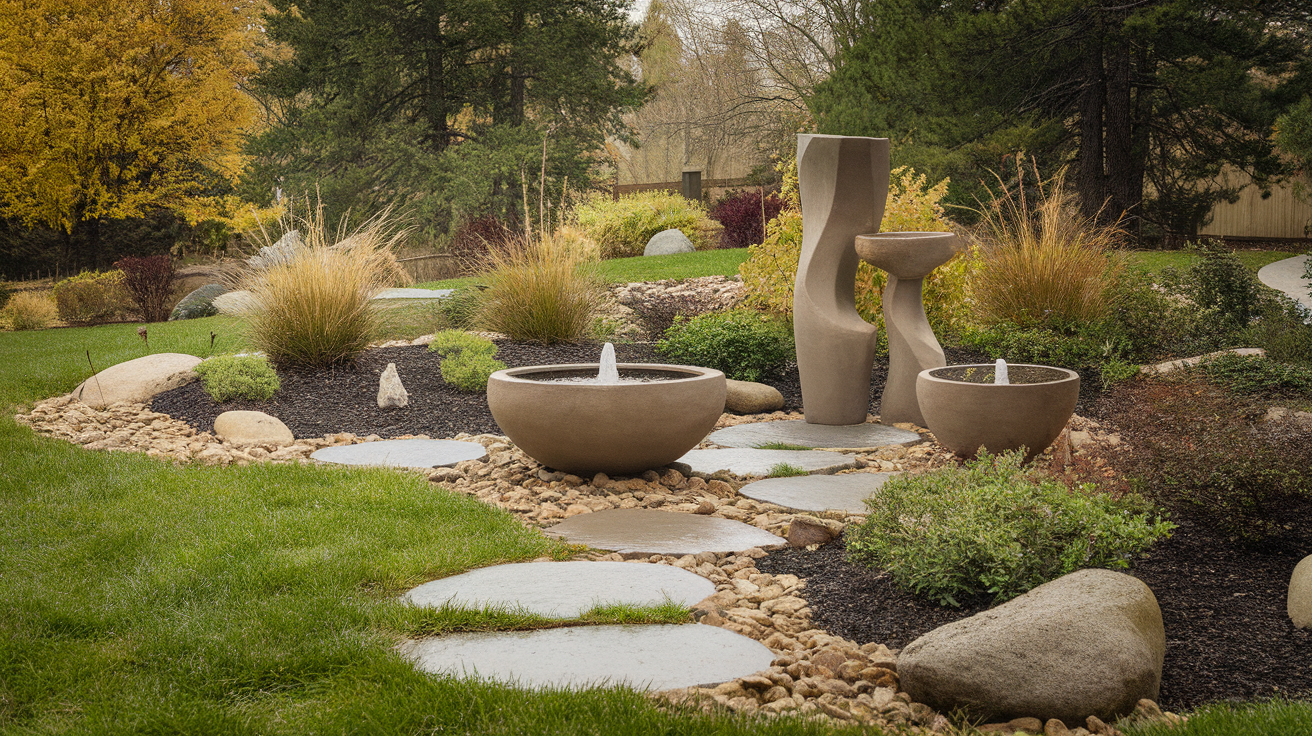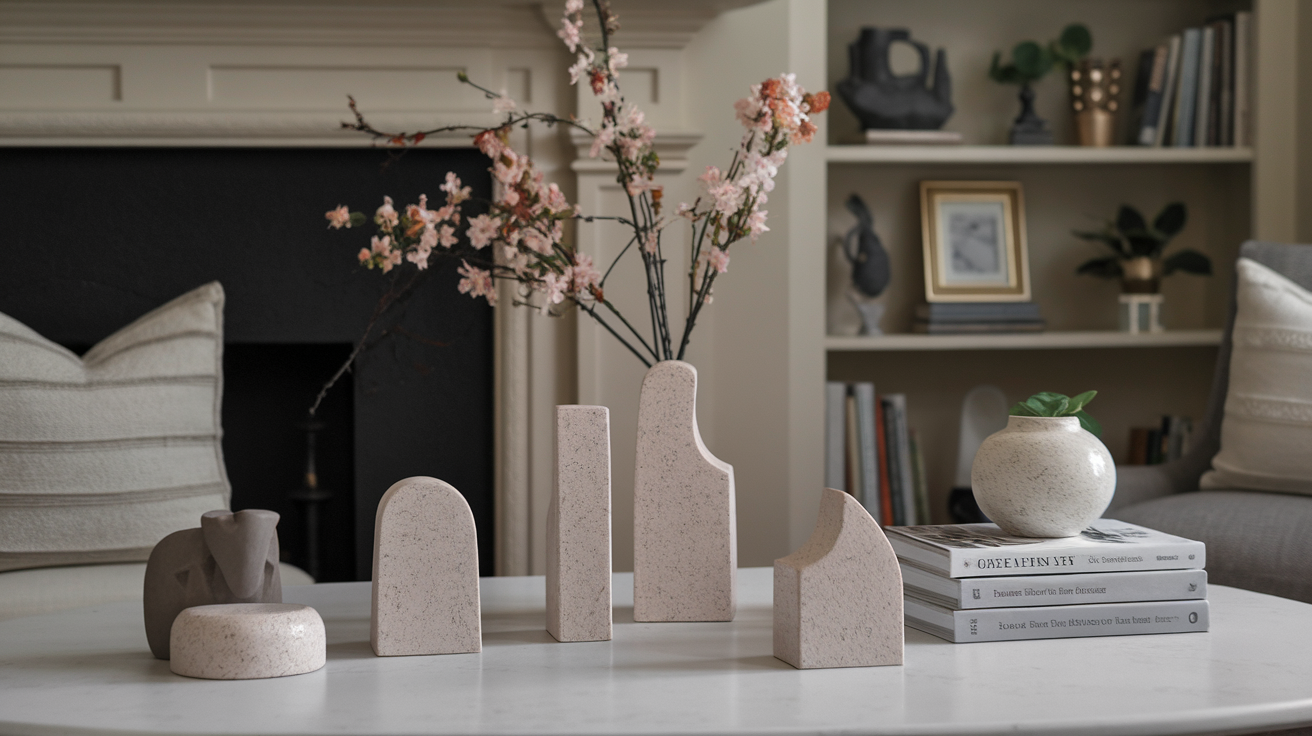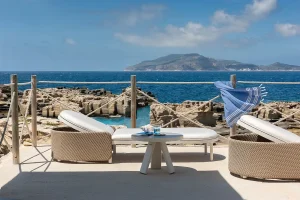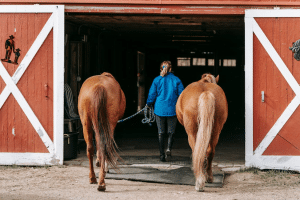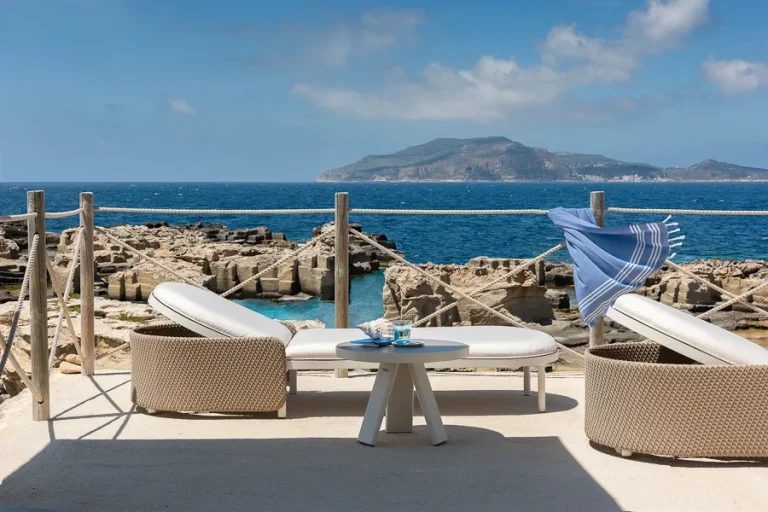Hi there! More and more people are talking about Fiberstone these days. You’ve probably seen it in planters, garden items, and modern homes—but what exactly is it?
Don’t worry if you’re confused. You’re not alone! Most folks have no idea what Fiberstone actually is or why it’s becoming so popular.
In this blog, you’ll learn:
- What is Fiberstone made of
- The main benefits of Fiberstone products
- How does it compare to other materials
I’ve studied Fiberstone products for years and tested them in various settings. My goal? To give you clear, honest information so you can decide if Fiberstone is right for you.
Let’s clear up the mystery about this material once and for all!
What Is Fiberstone?
Fiberstone is a tough material that combines stone powder and fiberglass. Think of it as stone, but lighter and stronger. When these materials mix together, they create something that looks like real stone but doesn’t have many of the problems that come with heavy stone products.
I’ve seen Fiberstone become more popular in homes and gardens recently. Why? It gives you the stone look without the stone weight. You can spot Fiberstone by its stone-like texture. When you touch it, you’ll feel a smooth surface that mimics natural stone.
But pick it up, and you’ll notice it’s much lighter than you expected! People who work with plants and outdoor spaces choose Fiberstone because it stands up well to weather changes. It won’t crack in cold winters or fade quickly in sunny spots.
The bottom line? Fiberstone gives you stone’s good looks without its downsides. That’s why more homeowners and designers are picking it for their projects.
What Is Fiberstone Made Of?
Fiberstone combines a few key materials to create its unique properties. Let me break it down for you:
- Fiberglass forms the backbone of Fiberstone. This material adds strength and makes it less likely to break when dropped.
- Stone powder gets mixed in to give that natural stone look and feel. It’s what makes you think “stone” when you see it.
- Some Fiberstone products also contain resin or sand to change how the final product turns out.
The magic happens when these materials come together. I’ve seen how this mix creates something that feels solid like stone but weighs much less.
You might wonder how they make all those different shapes. The answer is simple: molds. The Fiberstone mix gets poured into molds while it’s wet. When it dries, you get planters, statues, and other items with the exact shape you want.
This smart combo of materials is why you can move your Fiberstone planter without calling for help!
Key Features of Fiberstone
1. Lightweight yet Strong: I’m always impressed by how light Fiberstone feels when I pick it up. You can easily move a large Fiberstone planter by yourself without straining your back. Despite this lightness, these items don’t break easily. They can handle bumps and minor drops that would crack other materials.
2. Stone-Like Texture: The surface of Fiberstone has that natural stone look and feel we all like. When you run your hand over it, you’ll notice a texture that closely matches real stone. Your guests might not even realize it’s not actual stone unless they try to lift it!
3. Weather-Resistant: You don’t need to worry about leaving your Fiberstone items outside. They stand up well to rain, snow, and sun without falling apart or losing their color quickly. I’ve had Fiberstone planters that have stayed outside for years and still look good.
4. Low Maintenance: Unlike wood that needs staining or metal that can rust, Fiberstone needs almost no upkeep. You just wipe it clean with soapy water now and then. This saves you time and money in the long run compared to other materials.
5. Indoor-Outdoor Versatility: Fiberstone works well both inside your home and out in your garden. The same planter can look great in your living room during winter and on your patio in summer. This makes it a practical choice for changing your space throughout the year.
Common Uses of Fiberstone
Fiberstone is a material made from a mix of fiberglass and concrete, creating a lightweight yet strong product that’s gaining popularity in various fields. These are the most common ways people use Fiberstone today:
1. Garden Planters
Fiberstone planters are perfect for your outdoor plants. I’ve seen them used for everything from small herbs to large trees. You’ll find them in many shapes and sizes to fit your garden needs.
They work well for plant lovers who want something that looks good but isn’t too heavy to move when needed. These planters stay put during windy days but can be relocated without calling friends for help.
2. Outdoor Decor
Beyond just holding plants, Fiberstone works well for other outdoor items. Many people use Fiberstone fountains, statues, and decorative pieces in their yards.
They blend in with natural surroundings while standing up to the weather better than some traditional materials. You can place these items in spots where regular stone would be too heavy or might crack during freeze-thaw cycles.
3. Modern Indoor Pots

Your indoor plants can also benefit from Fiberstone containers. They look clean and neat in home settings without the risk of being too heavy for floors or shelves.
I particularly like how they fit with both modern and traditional room styles. The neutral colors and stone-like finish match most home color schemes without standing out too much.
4. Home Accents
Smaller Fiberstone items make great accents around your home. Things like bookends, small sculptures, and tabletop decorations can add visual interest without looking fake.
You can place these pieces on mantels, coffee tables, or bookshelves where they look like expensive stone but cost much less and won’t damage furniture with their weight.
5. Commercial Spaces
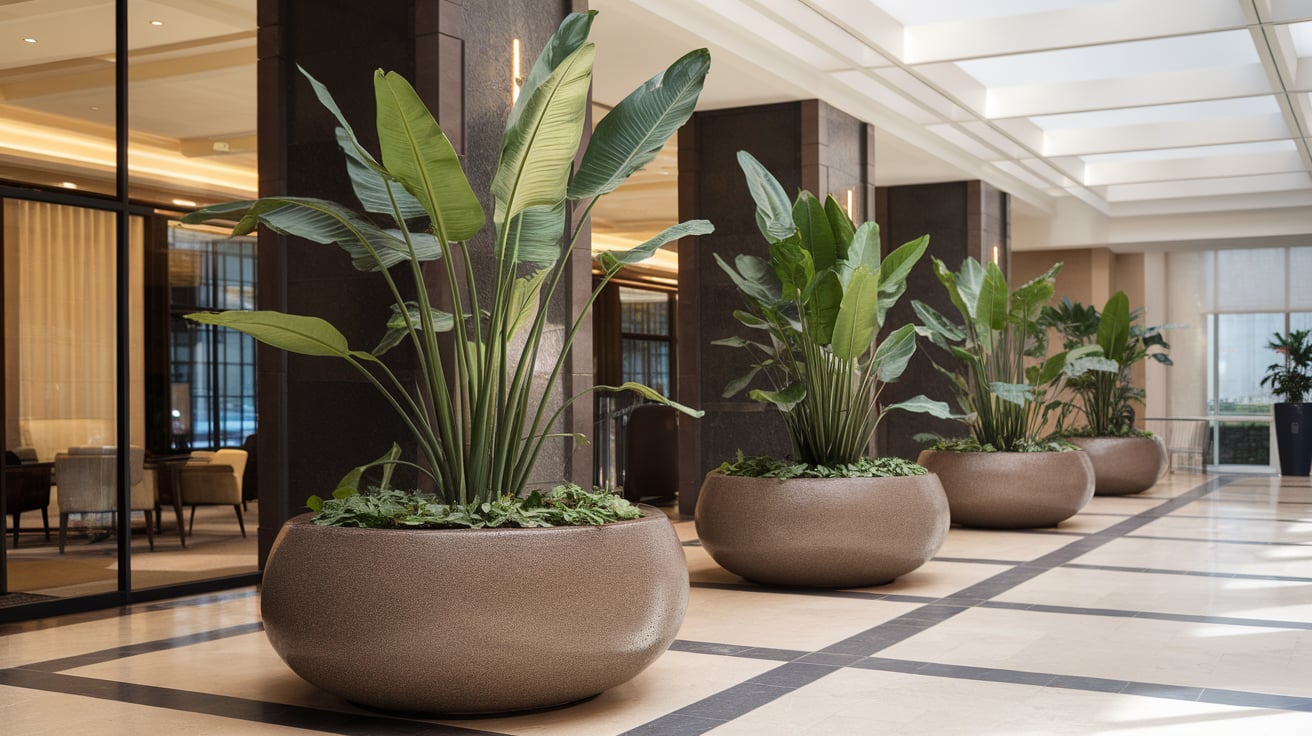
Many businesses choose Fiberstone for their public areas. Hotels, restaurants, and office buildings often use large Fiberstone planters in lobbies and entrances.
The material holds up well to high-traffic areas while keeping maintenance costs down. You’ve probably seen these without even noticing they weren’t real stone.
Fiberstone vs Other Materials
I’ve worked with many different materials for home and garden items. Let’s see how Fiberstone stacks up against the other common options you might consider:
| Material | Weight | Durability | Look & Feel | Best For | Not Great For |
|---|---|---|---|---|---|
| Fiberstone | Medium-light | Very good | Stone-like, high-end | People who want the stone look without the weight | Those on a tight budget |
| Concrete | Very heavy | Excellent | Natural, it can be rough | Permanent spots where you won’t need to move items | Places where you might want to change your layout often |
| Ceramic | Medium | Fair | Smooth, many color options | Indoor use, colorful designs | Cold climates where freezing can cause cracks |
| Plastic/Resin | Very light | Fair to poor | Shiny, it can look cheap | Budget projects, temporary use | Long-term outdoor projects in sunny areas |
| Terracotta | Medium-heavy | Good if kept dry | Earthy, traditional | Traditional gardens, dry climates | Wet or freezing locations |
| Metal | Medium | Good, but it can rust | Modern, sleek | Contemporary designs | Wet areas without proper coating |
You’ll find Fiberstone sits right in the middle for weight, not too heavy like concrete, not too light like plastic. I prefer it when I want something that looks high-end but doesn’t need two people to move it.
Are There Any Drawbacks to Fiberstone?
While Fiberstone offers many benefits, it’s important to consider its limitations before making a purchase. These are some potential drawbacks to be aware of:
1. Higher Cost
I won’t sugar-coat it: Fiberstone items often cost more than plastic or resin options. You might pay 2-3 times more for a Fiberstone planter compared to a similar-sized plastic one.
This higher price point can be hard to swallow if you’re working with a tight budget. However, you should think about how long it will last—many users find that paying more upfront saves money over time since they don’t need to replace items as often.
2. Can Chip with Hard Impacts
While Fiberstone is tougher than ceramic, it’s not unbreakable. I learned this the hard way. If you drop a Fiberstone pot on a hard surface, it might chip or crack at the impact point.
The good news? Small chips don’t usually spread into bigger cracks like they would with terra cotta. You can often fix minor chips with the right filler and a bit of paint to match.
3. Environmental Considerations
Fiberstone isn’t as green as natural materials. The fiberglass part comes from non-renewable resources, and the manufacturing process uses energy.
If being eco-friendly tops your list, you might prefer pots made from recycled materials or natural stone. That said, Fiberstone products typically last many years, which means less waste over time compared to items you need to replace often.
4. Limited Color Options
You’ll find that Fiberstone comes in fewer colors than plastic or ceramic options. Most Fiberstone products stick to neutral stone-like shades: grays, tans, whites, and blacks.
This works fine if you want a natural look, but if you’re hoping for bright blues or reds to match your decor, you might need to look elsewhere or plan to paint it yourself.
5. Surface Wear Over Time
With years of exposure to the elements, Fiberstone’s surface can become slightly rough or fade a bit. This happens more slowly than with other materials, but it’s still something to know. You can reduce this by applying a clear sealer every few years if you want to keep that fresh look for longer.
How to Clean and Maintain Fiberstone?
Keeping your Fiberstone items looking good doesn’t take much work. I’ve had Fiberstone planters for years, and they stay nice with minimal care. Let’s see how you can keep yours in top shape:
For regular cleaning:
- Wipe dust and dirt off with a soft, damp cloth
- For bird droppings or sticky spots, use a bit of water
- Let items dry completely before placing them back in direct sunlight
When your Fiberstone needs a deeper clean, mix mild dish soap with warm water. Don’t use harsh chemicals that might damage the finish. I usually clean mine this way about twice a year, and that’s plenty.
What to avoid:
- Pressure washers (too powerful and can damage the surface)
- Wire brushes or rough scrubbers
- Bleach or strong cleaners
- Dragging heavy items across the surface
During very cold winters, you might want to bring smaller items inside or cover them. At the same time, Fiberstone handles cold better than ceramic; extreme freeze-thaw cycles can still cause problems over many years.
If you notice a small chip, fill it with an epoxy repair product made for stone. Match the color as closely as you can, and most people won’t even notice the fix. With these simple steps, your Fiberstone pieces will stay looking fresh for many seasons to come!
Tips for Buying Fiberstone Products
When purchasing Fiberstone products, keeping a few key points in mind can help you make better choices. Let’s see what to look for:
1. Check Product Quality
I always run my hand along the surface when buying Fiberstone items. You want an even finish without bubbles or rough spots. Good Fiberstone has a consistent thickness all around—thin spots might mean poor quality.
Tap the side gently—it should sound solid, not hollow or plastic-like. Quality pieces feel substantial even though they’re lighter than real stone.
2. Consider the Right Size
Before you buy, measure your space carefully. I’ve made the mistake of buying planters that looked fine in the store but were too big for my patio.
Remember that Fiberstone items look more substantial than plastic ones, so they might seem larger in your space. Leave enough room to walk around larger pieces, especially on patios or in small rooms.
3. Look for Proper Drainage
For planters, check the bottom for drainage holes. Your plants will thank you for this! If you’re buying online where you can’t see underneath, read the product description carefully or ask questions.
Some indoor Fiberstone pots don’t have holes, which works for certain plants but not for most. You can drill holes yourself, but it’s better if they come ready to use.
4. Research the Brand
Not all Fiberstone products are made the same way. I’ve found that well-known brands often use better materials and have more consistent quality.
Ask store staff about the maker or search for company information online. Look for how long they’ve been in business and what customers say about durability. This research pays off in items that last longer.
5. Check Weather Ratings
If you plan to leave your Fiberstone outside year-round, make sure it’s rated for your climate. Some cheaper versions may claim to be outdoor-safe but won’t handle freezing temperatures.
Items made for indoor use often have different sealants than outdoor versions. The product label or description should tell you if it can stay outside in winter.
Conclusion
Now you know what Fiberstone really is! It’s that perfect middle ground between heavy stone and flimsy plastic, giving you good looks that last.
I’ve used Fiberstone in my own garden for years and can honestly say it’s worth considering for your home too. The blend of stone powder and fiberglass creates something that looks high-end without the typical drawbacks of natural stone.
The best part? You don’t have to go all-in right away. Start with one planter or small decorative piece and see how you like it. Many folks find that the first Fiberstone item leads to more because they work so well.
Remember the basics: check for quality, buy from good brands, and give it a quick clean now and then. Ready to add some Fiberstone to your home or garden? Your plants (and your back) will thank you!


